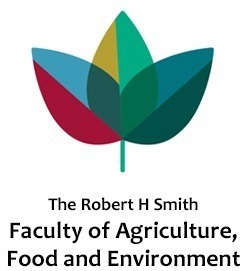Demishtein, K. ; Reifen, R. ; Shemesh, M. .
Antimicrobial Properties Of Magnesium Open Opportunities To Develop Healthier Food.
Nutrients 2019,
11.
Publisher's VersionAbstractMagnesium is a vital mineral that takes part in hundreds of enzymatic reactions in the human body. In the past several years, new information emerged in regard to the antibacterial effect of magnesium. Here we elaborate on the recent knowledge of its antibacterial effect with emphasis on its ability to impair bacterial adherence and formation complex community of bacterial cells called biofilm. We further talk about its ability to impair biofilm formation in milk that provides opportunity for developing safer and qualitative dairy products. Finally, we describe the pronounced advantages of enrichment of food with magnesium ions, which result in healthier and more effcient food products. © 2019 by the authors.
Shiff, Y. E. ; Reif, S. ; Marom, R. ; Shiff, K. ; Reifen, R. ; Golan-Gerstl, R. .
Mirna-320A Is Less Expressed And Mirna-148A More Expressed In Preterm Human Milk Compared To Term Human Milk.
Journal of Functional Foods 2019,
57, 68 - 74.
Publisher's VersionAbstractObjectivesTo investigate whether there is a difference in the profile of miRNAs between human milk (HM) from mothers of preterm versus HM from mothers of full-term infants. Second goal is to assess biological functions or implication related to those differences in miRNAs expression. Methods Four of the highly expressed miRNAs in milk were detected by qRT-PCR. Milk derived exosomes were incubated with cells. The expression of miRNAs and target gene were detected by qRT-PCR. Results MiRNA-320 was more highly expressed in the colostrum of fullterm than in preterm HM. The expression of MiRNA-148 was higher in preterm mother's milk than of full-term colostrum. MiRNA-320 and MIRNA-148a expression were upregulated in cells incubated with milk exosomes, which lead to a decrease in their target genes FASN1 and DNMT1 respectivilly. Conclusions Alterations in miRNAs expression in HM can affect biologic function in infants and may serve as a nutritional therapeutic target.
Curzon, A. Y. ; Chandrasekhar, K. ; Nashef, Y. K. ; Abbo, S. ; Bonfil, D. J. ; Reifen, R. ; Bar-el, S. ; Avneri, A. ; Ben-David, R. .
Distinguishing Between Bread Wheat And Spelt Grains Using Molecular Markers And Spectroscopy.
Journal of Agricultural and Food Chemistry 2019,
67, 3837 - 3841.
Publisher's VersionAbstractThe increasing demand for spelt products requires the baking industry to develop accurate and efficient tools to differentiate between spelt and bread wheat grains. We subjected a 272-sample spelt-bread wheat set to several potential diagnostic methods. DNA markers for γ-gliadin-D (GAG56D), γ-gliadin-B (GAG56B), and the Q-gene were used, alongside phenotypic assessment of ease-of-threshing and near-infrared spectroscopy (NIRS). The GAG56B and GAG56D markers demonstrated low diagnostic power in comparison to the Q-gene genotyping, which showed full accordance with the threshing phenotype, providing a highly accurate distinction between bread wheat and spelt kernels. A highly reliable Q classification was based on a three-waveband NIR model [Kappa (0.97), R-square (0.93)], which suggested that this gene influences grain characteristics. Our data ruled out a protein concentration bias of the NIRS-based diagnosis. These findings highlight the Q gene and NIRS as important, valuable, but simple tools for distinguishing between bread wheat and spelt.The increasing demand for spelt products requires the baking industry to develop accurate and efficient tools to differentiate between spelt and bread wheat grains. We subjected a 272-sample spelt-bread wheat set to several potential diagnostic methods. DNA markers for γ-gliadin-D (GAG56D), γ-gliadin-B (GAG56B), and the Q-gene were used, alongside phenotypic assessment of ease-of-threshing and near-infrared spectroscopy (NIRS). The GAG56B and GAG56D markers demonstrated low diagnostic power in comparison to the Q-gene genotyping, which showed full accordance with the threshing phenotype, providing a highly accurate distinction between bread wheat and spelt kernels. A highly reliable Q classification was based on a three-waveband NIR model [Kappa (0.97), R-square (0.93)], which suggested that this gene influences grain characteristics. Our data ruled out a protein concentration bias of the NIRS-based diagnosis. These findings highlight the Q gene and NIRS as important, valuable, but simple tools for distinguishing between bread wheat and spelt.

